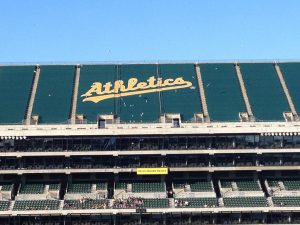This article is more than 5 years old.
This year’s ALA in San Francisco was, in some ways, an usual conference for me, while in other ways, it was the same thing as always. The unusual part was that I flew out with Mimi and Shane the Saturday before the conference started and had nearly a week of vacation before the conference began. The usual part was actually the conference itself, because once again, my conference activity was consumed with committee work and BIBFRAME and RDA stuff.
Like Lauren, I attended the BIBFRAME Update Forum, but I had some different takeaways, which I’ll share. The first speaker, Sally McCallum from Library of Congress, described how LC has their catalogers experimenting with inputting BIBFRAME descriptions, keeping the records in a triple store. They have found that it is not easy to transform MARC data into BIBFRAME data, and are looking to see if the BIBFRAME dichotomy between work and instance records is clear and useful for catalogers. At present, they are focusing on how catalogers can search the data. They are not looking at end user searching, they are not doing acquisitions processing, they are not managing holdings and circulation using BIBFRAME, and they are not even looking at how they’d go about distributing records. So, it’s very early days for them. They do have 19 million former MARC descriptions redone as BIBFRAME works and instances, which is an awful lot of data to work with. Despite the fact that LC still has so much work to do with BIBFRAME, Beecher Wiggins of LC said that their plan is to have data ready to be broadly distributed in five years. We’ll have to see. As Lauren mentioned, the forum also featured brief presentations by ILS companies to discuss how they are preparing for BIBFRAME. The main thing I got from each of them is that they are all working on training among their staff and they’re all listening to/asking questions of customers to see what kind of things they’d like to see in a BIBFRAME-based system.
During the conference I also attended a total of seven hours of meetings (split across two sessions) of CC:DA (Catalog Committee for Description and Access), the committee that develops ALA’s official position on RDA. Normally, these meetings are super inside-baseball and of no interest to anyone who isn’t really into RDA rule, but there were three pretty interesting things to share out. (Trust me there was plenty of super-inside baseball stuff at these meetings, like the seemingly never-ending discussion of a 154 page report on machine-actionable data.) This stuff may still be too inside-cataloging for most folks, but I’ll take a stab at describing it:
1. The Library of Congress Authority File is going to get a massive automated re-vamp thanks the wizardry of Gary Strawn at Northwestern University (who our own Kathy Martlock worked with on a project…brush with fame!). These changes will not involve changing the 1XX or heading fields, but will involve adding lots of good stuff to the attribute fields that enrich the descriptions of authorized headings. Over 3.5 million authority records will have ISNIs added to them, which I know will make Lauren quite happy. This project was described as a “heart transplant” for the LC authority file.
2. The Functional Requirements models, FRBR (Functional Requirements for Bibliographic Records), FRAD (Functional Requirements for Authority Data), and FRSAD (Functional Requirements for Subject Authority Data), are being consolidated and will have major revisions in the next couple of years. That means that the conceptual models that underlying RDA will be going through major revisions, which are pretty much guaranteed to have major impacts on RDA.
3. The governance structure for RDA is going to become more international and is going to be entirely revamped. Back when we had AACR2, pretty much whatever the US and the UK said was it. Which made sense, because AACR2 stood for “Anglo-American Cataloging Rules, 2nd ed.” But RDA is trying to be more international. So, the proposed plan is to have an RDA Board, which will consist of six representatives, one each from North America, Latin America & the Caribbean, Europe, Asia, Africa, and Oceania. We’ll have to see how this develops, but it could have a major change in how much input ALA has on RDA.
Okay, that’s probably enough conference stuff for now. On our last night in town, Jeff and I joined Thomas, who still had another night to go, taking in an A’s game in Oakland. Although the stadium is a concrete bunker with all the charm of a parking garage, it was quite fun. The stadium is also the home of the Oakland Raiders, and the huge Raiders banner at the front gate that read “A Commitment to Excellence” had Jeff and me wondering if this was meant as some sort of Northern California hipster irony. But the big Athletics sign across the seats was kinda cool.


2 Comments on ‘Steve at ALA Annual 2015’
Whoohoo! ISNIs in 3.5 M authority records!
It ‘s interesting to hear plans for RDA international governance. Things are more global these days aren’t they?